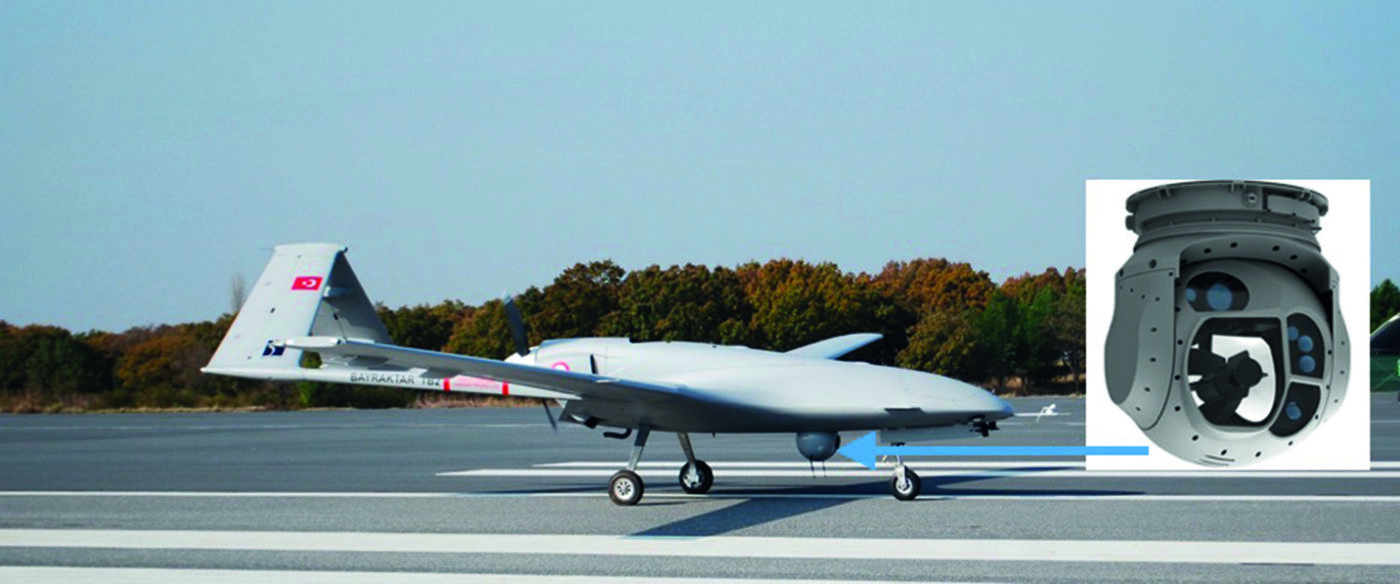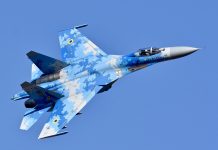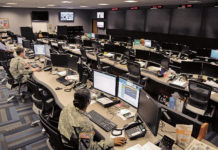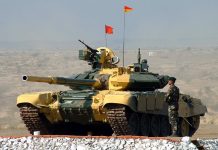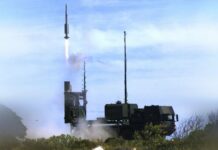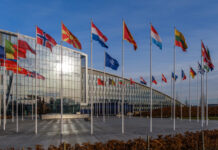Success in future conflicts depends on the ability to analyse the trends found in today’s wars. By examining the Second Nagorno-Karabakh War, and the ongoing Russian-Ukrainian War, we can gain valuable insights concerning the methods of warfare. The following observations provide insights that can help leaders prepare for future threats.
On 24 February 2022, the Russians miscalculated the nature of the war they unleashed on Ukraine. They expected and planned for a quick victory. NATO also failed to understand that the Ukrainians would fight. When the US offered to evacuate Ukrainian President Volodymyr Zelensky from Kiev on 26 February 2022, Zelensky’s reply, “I don’t need a ride, I need more ammunition,” electrified and rallied his nation. Russia’s intent appeared to be to stun the Ukrainians with short but fierce missile strikes and then overrun them in a lightning assault.
Understand Your Enemy
Rosgvardia, Russia’s internal-security police forces, raced ahead of several of the attack columns to accept the surrender of Ukrainian officials only to be ambushed by Ukrainian forces. Based on their incorrect assumption of an easy and quick war, the Russians attacked with unfavourable force ratios against a nation that rapidly mobilised to repel them. The initial Russian onslaught involved nearly 110 Battalion Tactical Groups (BTGs), comprising approximately 142,000 soldiers, against a Ukrainian population of over five million. The first phase of the invasion (24 February to 28 April 2022) was catastrophic for Russia. Endemic, internal corruption highlighted Russia’s inability to “know themselves”, resulting in them overestimating the capabilities of their own forces.
Prior to the invasion, Russian troops sold vital fuel for cash, were issued expired rations, and operated trucks with tires that quickly deflated or rotted away. The AZART P-187 digital software-defined radios (SDR) used in the first weeks of the invasion, an essential tool to synchronize combined arms operations, did not work as they had been intentionally assembled with inferior parts. Unable to coordinate their forces with secure communications, Russian commanders resorted to using mobile phones. Ukraine easily identified and targeted these. The false assumption of a quick triumph, and the widespread corruption of the full Russian military apparatus, surely provides implications for Communist China as they contemplate the use of military force against Taiwan.
First Strike
Today, ubiquitous sensors can detect almost everything in the battlespace and long-range precision fires (LRPF) and drones can quickly capitalise on these capabilities to destroy high value targets (HVT). The “first strike” advantage is the ability of an attacker to paralyse an enemy in the first hours and days of a war. A surprise first strike that destroys the most critical targets, if executed with overwhelming force, can be decisive. The Azerbaijanis achieved this in the first weeks of the Second Nagorno-Karabakh War. The Russians did not maximize the first strike advantage when they invaded Ukraine.
On 10 March 2022, Russian Defence Ministry spokesperson Igor Konashenkov said that Russia destroyed approximately 2,911 Ukrainian military facilities. Even if this number was accurate and not propaganda, it was insufficient to cripple Ukrainian defences. Despite hundreds of Russian artillery, missile, and air strikes in the war’s first week, Russian LRPF attacks were inadequate for the scale and depth of the battlespace. Key targets, such as Ukraine’s internet service and communications capabilities, were degraded, but in two weeks, were back in operation thanks to American entrepreneur Elon Musk who provided Ukraine with his Starlink internet service.
The Russians failed to eliminate other HVTs, such as the capture or killing of President Zelensky and the reduction of key Ukrainian government facilities and headquarters. Instead of decapitating the enemy and forcing an immediate surrender, the Russians only stiffened their resolve and resistance. One can be certain that the Chinese are studying this “first strike failure” closely and would undoubtedly plan for an overwhelming first strike to capture Taiwan.
Logistics
In the Second Nagorno-Karabakh War, the Azerbaijanis outnumbered, outmatched, and outfought their Armenian adversaries. They supported their military forces with enough logistical support to sustain the fight for 44 days. Had the war lasted into the winter, Azerbaijan would have experienced logistical shortages. They recognised they had to win before the mountains were deep in snow. The Russians attacked Ukraine with too small a force, along multiple, disparate axes of advance, with woefully inadequate resupply of ammunition, fuel, food, spare parts and more. It was a logistical planning failure that still plagues the Russian forces seven months into the conflict.
Masking
The greatest lesson of both the Second Nagorno-Karabakh War and the Russian-Ukrainian War is masking. Masking is the full-spectrum, multi-domain effort to deceive enemy sensors and disrupt enemy targeting. Today’s battlespace is transparent, with optical, thermal, electronic, acoustic, and quantum sensors operating in all domains — land, sea, air, space and cyber. Against a technologically equipped peer competitor, it is nearly impossible to hide. In the Second Nagorno-Karabakh War, Azerbaijan had multi-domain sensors that uncovered Armenia’s forces. Azerbaijan enjoyed tremendous assistance from Turkey, while Armenia received little support from Russia. In the Russian-Ukrainian War, both Russian and Ukrainian forces have access to sophisticated sensor networks. Russia has a robust satellite imagery capability, as well as aircraft, unmanned aerial systems, and ground-based sensors.
The US and NATO are providing Ukraine with arguably the best targeting-sensor data in the world. Multiple sensors identify:
- Command Posts (CPs)
- ammunition dumps
- fuel depots
- other HVTs
Precision attacks against these HVTs occur nearly every day in Ukraine. In April, an article in Forbes Magazine reported that Russia had lost over 31 CPs, with many senior leaders killed in these strikes. Although the Ukrainian HVT losses have not been as openly reported, their losses are also high. The inability to mask and deceive enemy sensors, coupled with the inability to disrupt the enemy’s kill-chain to foil precision strikes, has resulted in stagnation, with both sides nearing exhaustion. In today’s battlespace, the lesson is simple: mask or die.
Top Attack and Long-Range Precision Fires (LRPF)
In both the Second Nagorno-Karabakh War and the Russian-Ukrainian War, top attack by precision weapons has become the preferred method of attack. The thickness of the front glacis of a tank is much less important today than the tank’s ability to mask and avoid top-attack systems. In both conflicts, the range of LRPF systems is the entire battlespace. Azerbaijan struck throughout the depth of the disputed Nagorno-Karabakh region and Russia has attacked across the width and breadth of Ukraine. In turn, Ukraine has also shown its ability to reach into Russian occupied Crimea. In modern warfare, there are no sanctuaries.
Urban War
Cities are a vital nexus of military, political, and economic infrastructure and hold 57 per cent of the world’s human population. City fighting cannot be avoided. It is difficult, risky, requires significant military manpower, and consequently, results in often horrendous casualty rates. As cities expand geographically, this problem multiplies. As an example, Kyiv occupies 839 square kilometres and had a pre-war population of 3.5 million. Assuming a quarter of Kyiv’s inhabitants would serve as combatants, to defeat a stout, urban defence of the city, Russia should have committed a minimum of five times the numbers of attackers to defenders, or approximately 875,000 Russian troops. US Army doctrine proposes an even greater ratio of 6:1 in analogous offensive operations against defended urban targets. Numbers matter.
There is an inflection point where weapon system technology cannot compensate for large quantities of ground troops. Attacking Ukraine, with a population of 39 million, with an army of less than 200,000, was sheer hubris. In addition, urban combat is incredibly destructive, as the major city fights of WWII and more recent conflicts testify.
Ukrainian cities have been the scenes of massive, close-quarters fighting in the rubble of their battered buildings and infrastructure; truly deadly work for the combatants on both sides. The debris of broken buildings often aids the defender by blocking access to roads and offering ready-made defensive works. Fighting in the urban battlespace adds a complexity that defies conventional warfighting methods. New tactics, techniques, procedures and technologies for urban combat are essential. China would be faced with this daunting challenge should they attempt to capture Taipei with expeditionary forces, transported across the straits of Taiwan from mainland China against well-trained, motivated and prepared Taiwanese defence forces.
Unmanned Warfare
Unmanned systems have come of age. The clever use of Loitering Munitions (LMs) and Unmanned Combat Aerial Vehicles (UCAVs) generated a significant advantage for Azerbaijan during the Second Nagorno-Karabakh War. Both Russia and Ukraine have extensively used LMs and UCAVs during their ongoing conflict. Ukraine’s use of UCAVs, such as the BAYRAKTAR TB2, made spectacular attacks on land and in the Black Sea. The decisive use of robotic systems in this conflict, however, is elusive.
The scale of the war in Ukraine, compared to the 2020 Nagorno-Karabakh War, has proven that LMs and UCAVs are valuable tools, but the piecemeal use of these systems will not dominate the battlespace. If organized in mass and employed in a combined arms effort to establish a “persistent, precision fires strike zone” over a designated area of the battlespace, they will create the conditions for a breakthrough. Until then, robotic systems are an invaluable enabler, but not yet a decisive weapon.
Leadership Losses
With CPs hunted as HVTs in both the Second Nagorno-Karabakh War and the Russian-Ukrainian War, commanding and controlling (C2) military forces from large, fixed command posts is both antiquated and extremely risky. The Russians employ a top-down, tight-rein command style, which is additionally hampered by the lack of a professional non-commissioned officer corps. In the Russian Army, leadership rests solely with the officers and casualties among Russian officers have been extraordinary.
A Newsweek article on 8 August 2022 reported that, since the beginning of the invasion, the Ukrainians have killed 99 Russian colonels and lieutenant colonels, and possibly 14 generals. This serves to explain the poor combat performance of many Russian units. It takes at least a year to train a junior officer, years to train majors and colonels, and decades to train generals. Losing so many leaders in the space of just six months is a tremendous disruption of Russian combat leadership and unit cohesion.
Unlike many weapon systems, leadership losses such as these are very difficult to replace, especially in the short term. China’s People’s Liberation Army, which shares the same top-down style of command, and nominal combat experience, could suffer a similar fate if they chose to engage a potent foe such as Taiwan. These few striking observations from the Nagorno-Karabakh War and the Russian-Ukraine war should serve as a warning for both US and NATO forces as they prepare for the coming storm.


